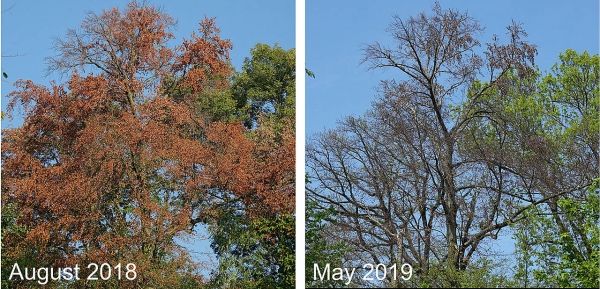Until now, 2003 was considered as the driest and hottest year since the beginning of instrumental climate recording. This record can now be considered obsolete: "The past five years were among the warmest in Central Europe since record, and 2018 was the most extreme one," says Professor Bernhard Schuldt from Julius-Maximilians-Universität (JMU) Würzburg in Bavaria, Germany.
The average temperature from April to October 2018 was on average 3.3 degrees Celsius above the long-term average and 1.2 degrees higher than in 2003, Schuldt and a research team report in the journal Basic and Applied Ecology. This had dramatic consequences for the forests in Germany, Austria and Switzerland.
Water transport through the wood collapses
"At such temperatures, our Central European vegetation reaches its limits," says the JMU professor. Together with other researchers from Germany and Switzerland, the plant ecologist was able to confirm with physiological measurements: When it is too hot, the tree simply loses too much water via its surface. As a result, the negative tension in the wood's conducting tissue becomes too steep, which ultimately leads to hydraulic failure interrupting the water transport.
Already during the course of the summer, severe drought-related stress symptoms were observed in most ecologically and economically important tree species, including widespread leaf discoloration and premature lead shedding.
Read more at University Of Würzburg
Image: Premature leaf senescence of a beech tree during the 2018 event, followed by lacking leaf flushing and canopy dieback in the following year. (Image: Ansgar Kahmen / Universität Basel)


